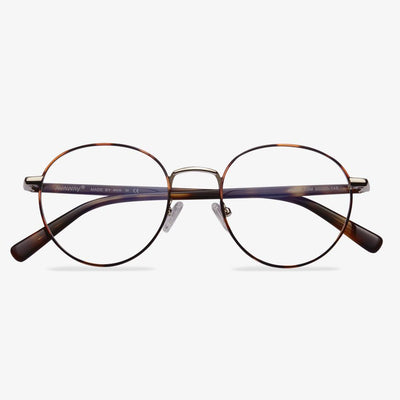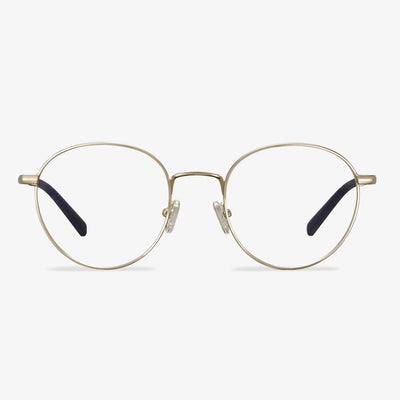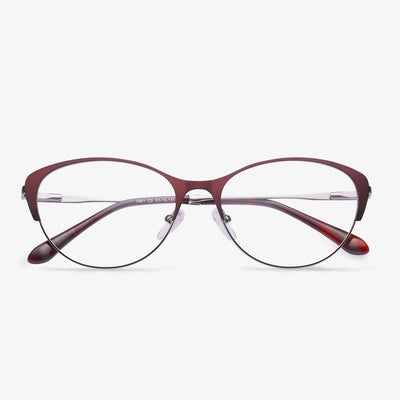Does it take time to get used to new prescription glasses?
People who wear new advanced glasses usually have an adjustment period. For novices, please gradually adapt to the glasses. In the first 2-3 weeks, increase the wearing time every day to adapt to the lens. For example, wear it for 1-2 hours on the first day, then add 2 hours a day until you feel comfortable. Before driving, please try it at home. Remember, you need to turn your head and move your eyes to find the 'sweet spot' for the activity you care about.
For experienced wearers, even under the same prescription, a new incremental pairing is required, and some adjustments are usually required. Progressive lens design, frame shape, and many other factors will also affect the adjustment time.
Convenience and timeliness.
The essential carrier of Mobile applications is the mobile terminals. As the name suggests, these mobile terminals are not only smartphones and tablets but smart glasses, watches, clothing, accessories, and other kinds of personal belongings. They are part of what the human body wears and can be used anytime, anywhere. People can make full use of the fragmented time in life and work to accept and process all kinds of information on the Internet. They can no longer worry that they will miss any vital information, time-lapse information.
The Optical Center of A Lens
When wearing glasses, try to look through the optical center of the lens. This needs the cooperation of the neck, you can slightly lower the head when looking at the computer, to adjust the line of sight. The Center of optical glasses is divided into two kinds: 1 mm up myopic lens center is the most proper, of course, more than 2-3. And the most important thing is that the lens pupil high (about the two-lens optical center of the high and low) must be proper (that is, the right of the lens optical center is 1 mm, the left must be 1 mm. 2-3 mm is the same, what is the height of the pupil on the right side must be the same on the left side. The optical center of the presbyopic lens is 1 mm, the most proper.
The Types of Blue Light Glasses
Computer Glasses - Clear Lenses
First, we will show you the computer glasses which have clear lenses, These glasses are made to be used when working on your computer, smartphone or while watching TV. The best computer glasses can filter 5-30% of all blue light.
Night Driving Glasses - Yellow Lenses
When driving at night, the blue light glasses with yellow lenses would be suitable. These blue light lenses are good at removing more of the highest energy blue light, around 440 nm and they are also able to distinguish traffic lights when driving at night. These glasses can block around 65-70% of blue light.
Blue Light Glasses for Sleeping - Red Lenses
The blue light glasses for sleeping have red lenses. The best blue light glasses come with red lenses and they block 99.5%-99.9% of all blue light and a large amount of the green light spectrum, from 495-550 nm.
After knowing the different types of blue light glasses, we will show you how to perform the blue light glasses tests.
What Are Plano Lenses?
Plano lenses are simply optical lenses which provide no corrective power. That is to say. Plano lenses are eyeglasses lenses that provide no vision correction. They are in widespread use as protective equipment or safety spectacles designed to protect against eye injuries caused by flying dust, metal, wood chips, and other particles.
What Does Plano Mean for Glasses?
If you need a pair of plano glasses, you will see the term plano, PL or 0.00 in the Sphere box on your eye prescription paper. That means that the lens has no corrective power. If only either of your eyes requires correction, you may be given a pair of glasses that as one corrective lens for the affected eye and a plano lens for the unaffected eye.
How to test a blue-light lens?
Blue-light-blocking lenses are now focused on refractive indices of 1.56 and 1.60. If you buy lenses that are not of either refractive index, be wary. Of course, with the development of technology, now some brands have produced 1.71 refractive indexes blue-light-blocking lenses, suitable for people with high myopia to wear. The true lens package should at least have the product name, refractive index, dispersion coefficient, transmittance, color, SPH, CYL, and other indicators. These indicators are perfect, can be treated as the reference basis of the formal product. In addition, you can go to a professional optical shop or testing institutions for testing.
Different Type of Lenses: How to Choose
In this section, we will list some of the lenses for glasses.
Plastic lenses: In 1947, the Armorlite Lens Company in California introduced the first lightweight plastic lenses. The lenses were made of a plastic polymer called CR-39, because it was the 39th formulation of a thermal-cured plastic developed by PPG Industries in the early 1940s. Plastic lenses are light and low cost.
Polycarbonate lenses: polycarbonate lenses were first introduced in the 1970s and they have become increasingly popular anad remained for a long time. Polycarbonate glasses are slighter and significantly more impact-resistant than CR-39 plastic, making them a preferred material for children’s eyewear, safety glasses, and sports eyewear.


















































